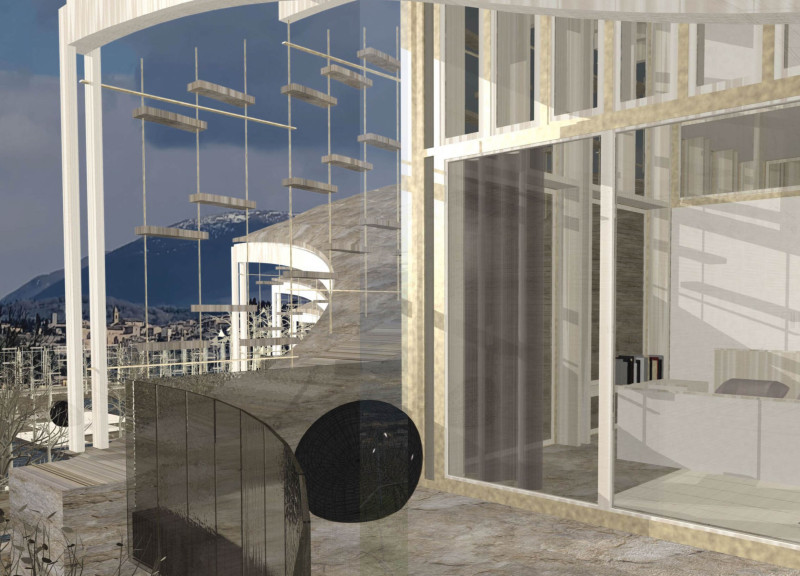5 key facts about this project
The design is situated within a landscape of vineyards framed by mountain slopes, creating a peaceful atmosphere for accommodation. The overall idea is to connect the buildings with their natural surroundings, enhancing the relationship between people and nature. Each element of the design focuses on creating comfortable living spaces while responding to the environment.
Crosswalls as Structural Elements
Crosswalls play a key role in the design, oriented according to the layout of the vineyards. Made from locally sourced rock stone, these walls serve as supports for raised decks and roofs. They also separate different residential areas, providing privacy while allowing light and air to flow through. The varied heights of the crosswalls reflect the contours of the land, establishing a visual link with the landscape. Their use of stone is a nod to local traditions, grounding the design within its geographical context.
Public and Private Spaces
The central dining and tasting area is designed to encourage interaction among guests. This welcoming space features a reception counter, a kitchen for self-service, and a terrace that leads into a landscaped garden. It serves as a communal hub, allowing visitors to gather and enjoy local food and wine offerings. The design promotes a social atmosphere while maintaining good circulation throughout the facility, enhancing the overall experience.
Cabin Design and Layout
Each cabin varies in height and roof shape, ensuring a sense of privacy for guests. Glazed shopfronts allow natural light to illuminate the interiors, creating a connection with the outside. Inside, the layout is efficient, with areas designated for sleeping and living, designed for comfort and usability. The choice of neutral grey laminated panels for built-in furniture and stone slates for flooring maintains a cohesive look throughout the cabins.
Landscaping and Integration
Landscaping is an essential component of the design, featuring gardens, open spaces, and strategically placed vegetation. Olive trees and vines add natural shade and beauty to the outdoor areas. This careful integration of plant life enhances the relationship between the built environment and the landscape, inviting guests to engage with their surroundings.
The design encourages occupants to experience the landscape fully, reflecting a simple yet effective synergy between architecture and nature. This balance creates a welcoming environment that honors both the functionality of the spaces and the beauty of the setting.






















































